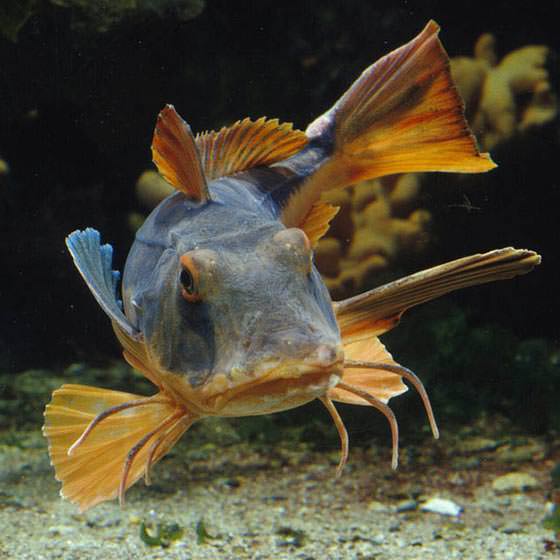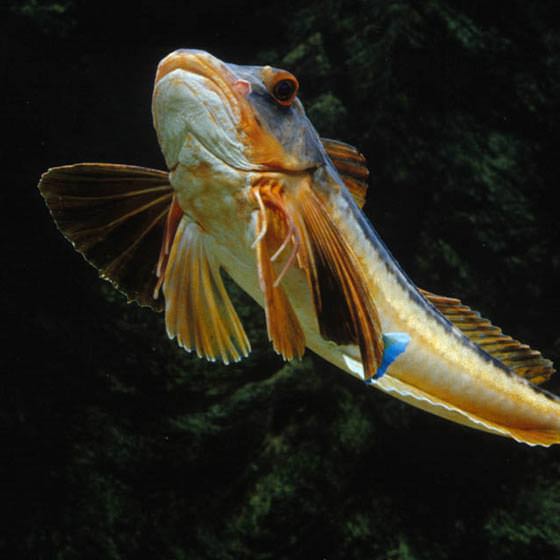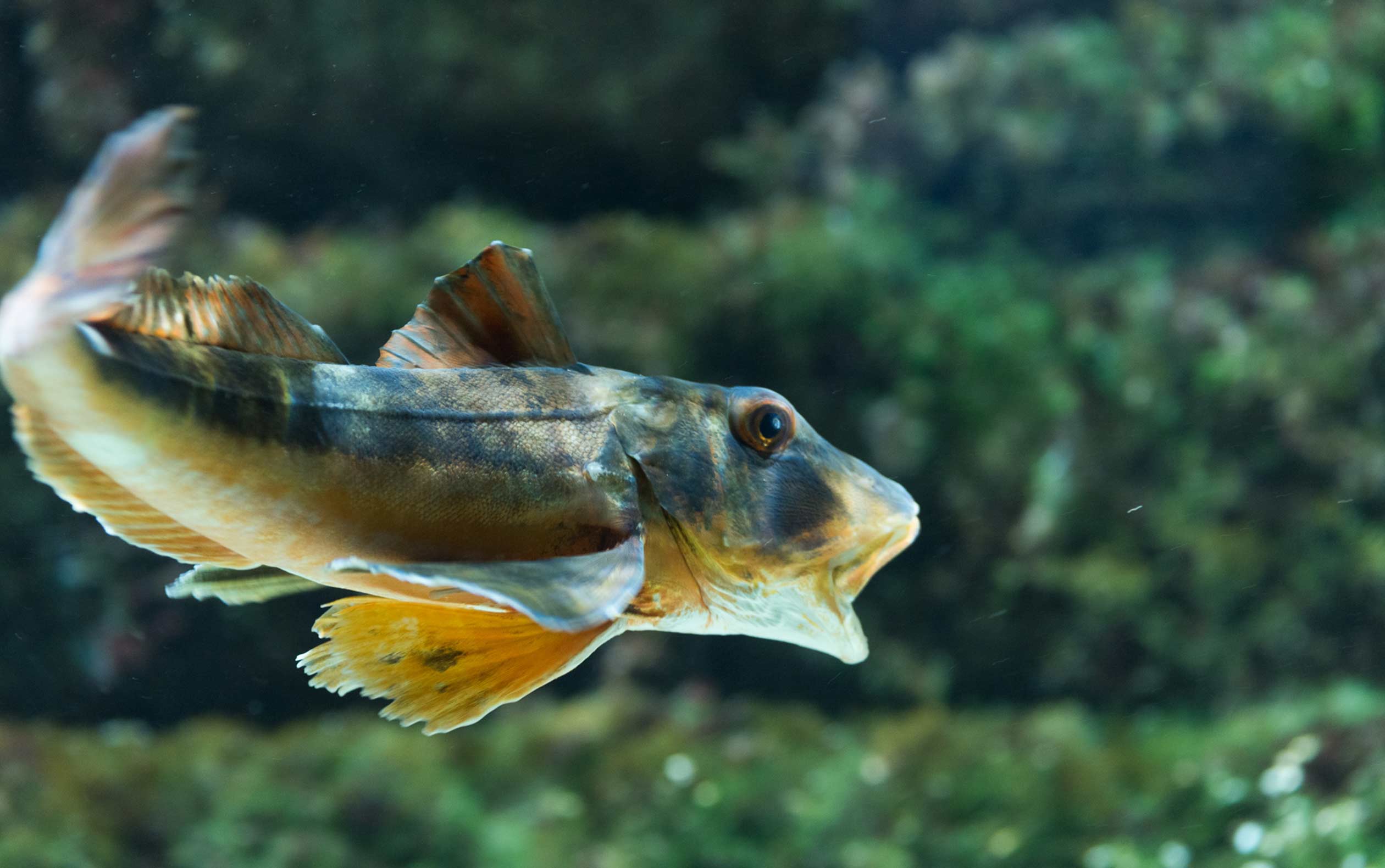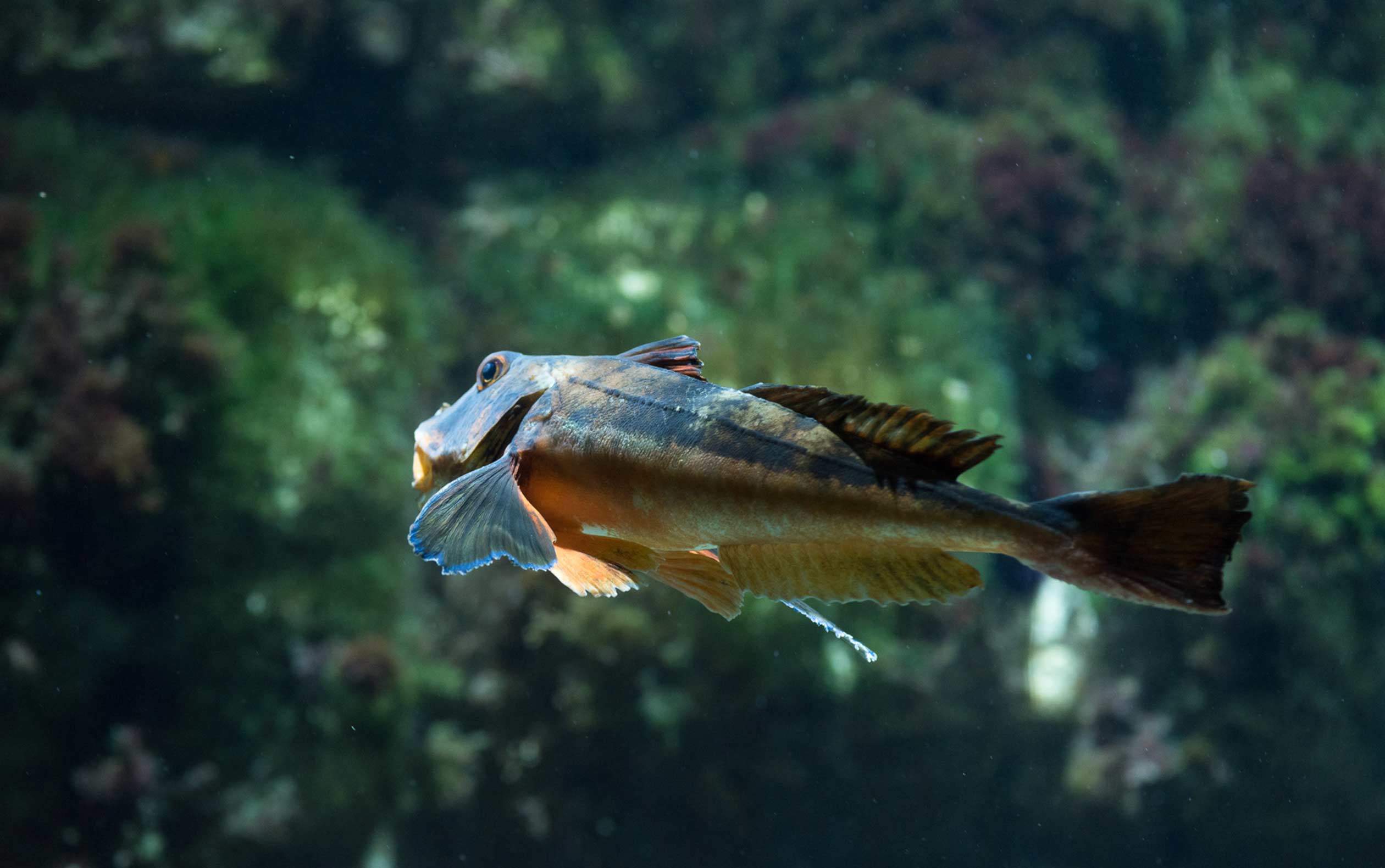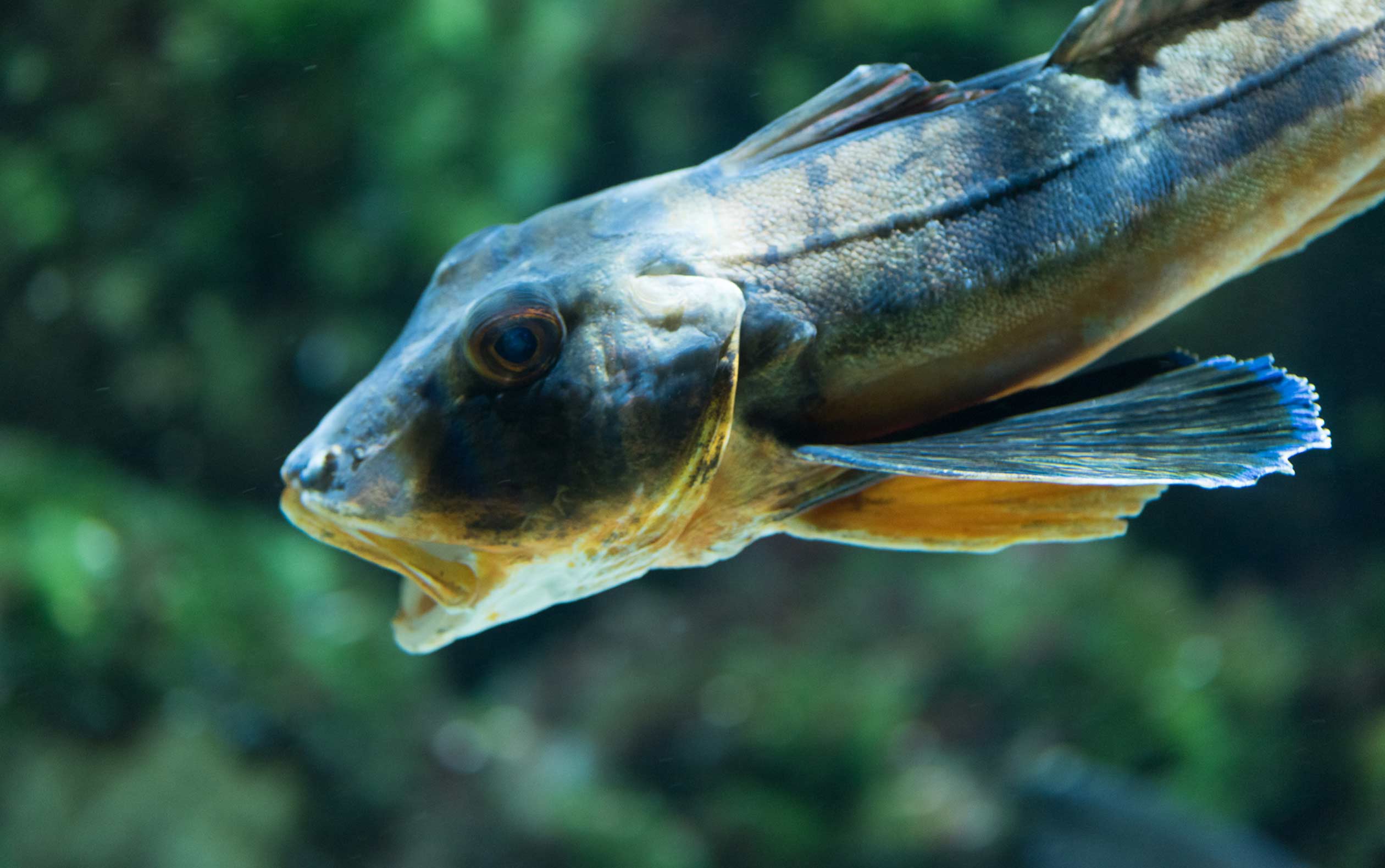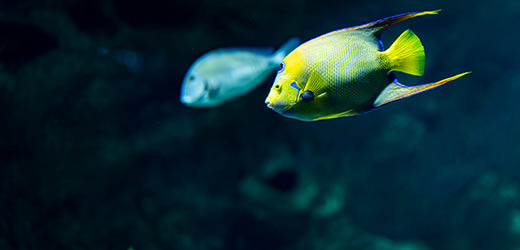Environment
The tub gurnard prefers beds of sand or mud, ranging from 20 to more than 300 m below the surface. It comes in closer to the coast in the summer, sometimes even entering into estuaries, and returns to the deepest ocean for the winter.
This fish has the unique feature of moving around the ocean floor using the first three pairs of rays on its pectoral fins, which have no membrane connecting them to one another. These locomotive appendages are equipped with sensory receptors that allow it to locate prey buried in the sediment.
